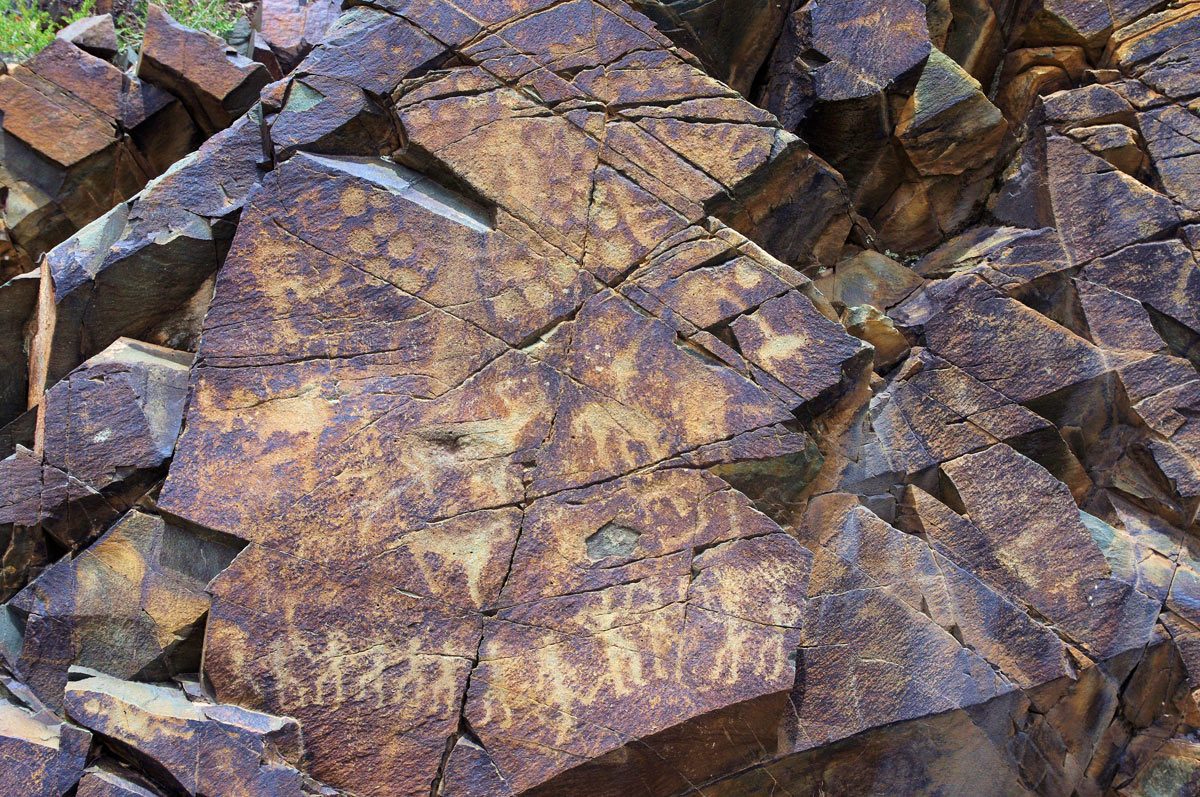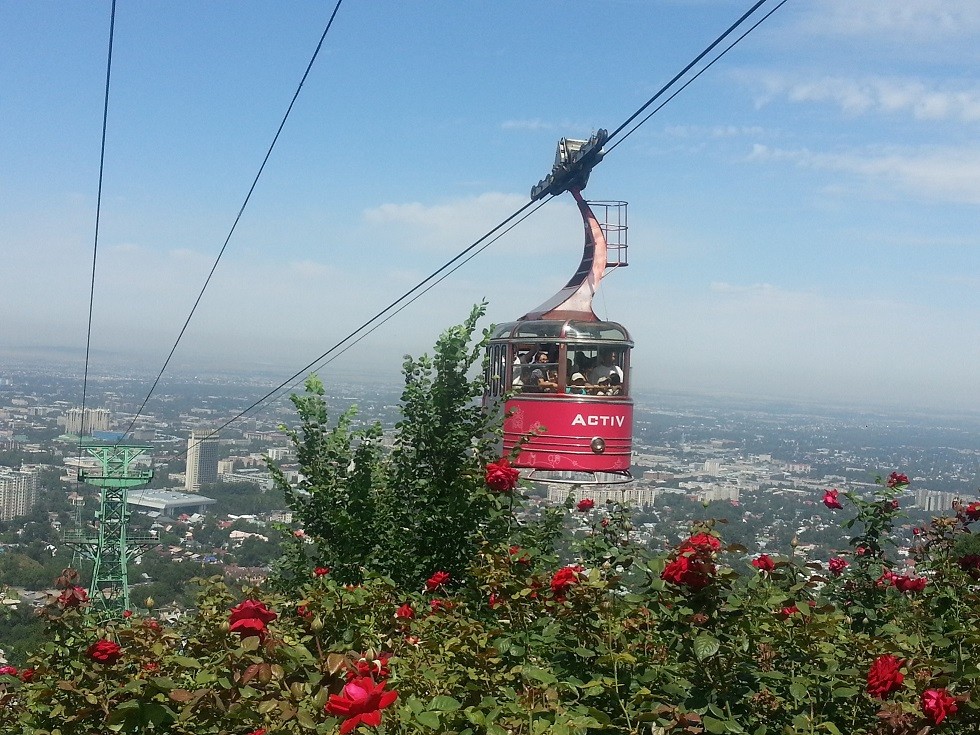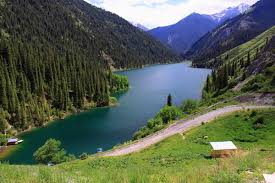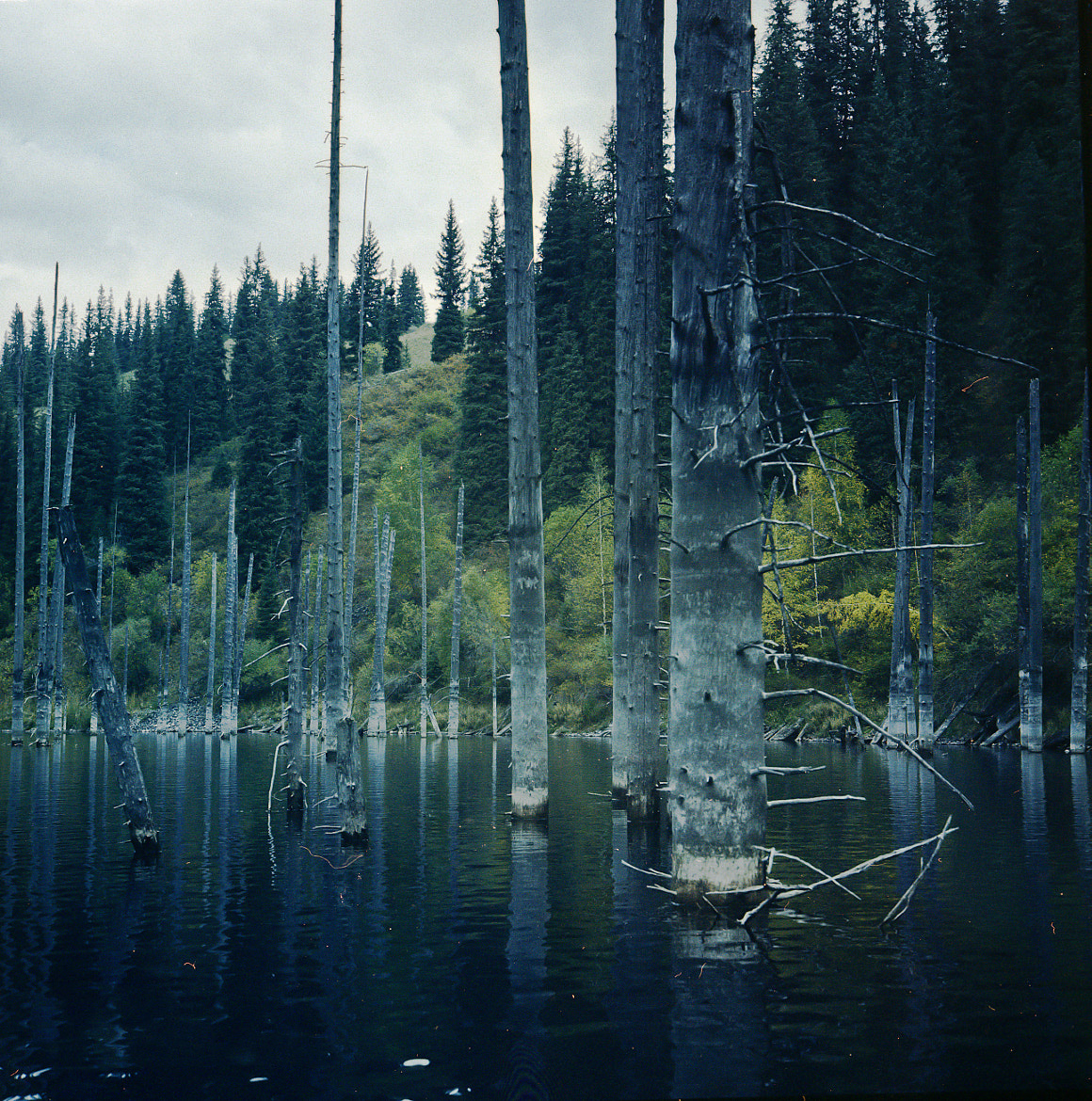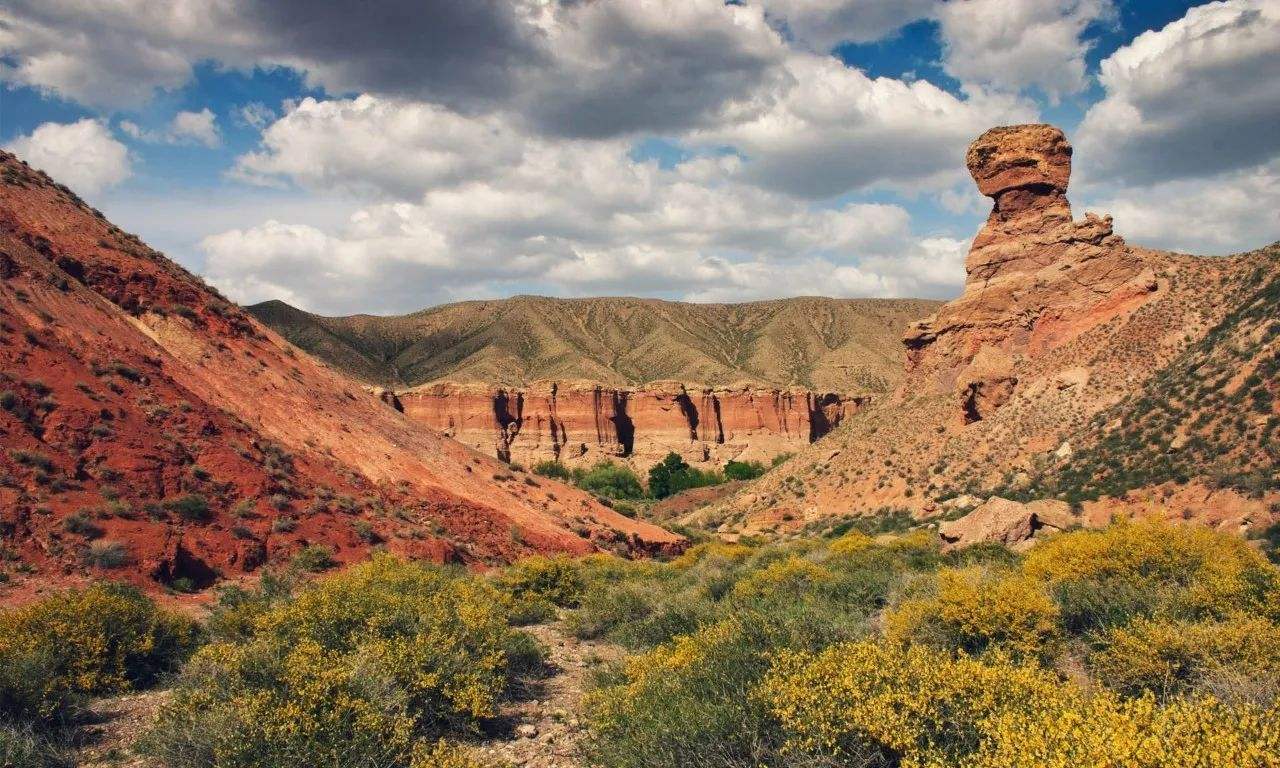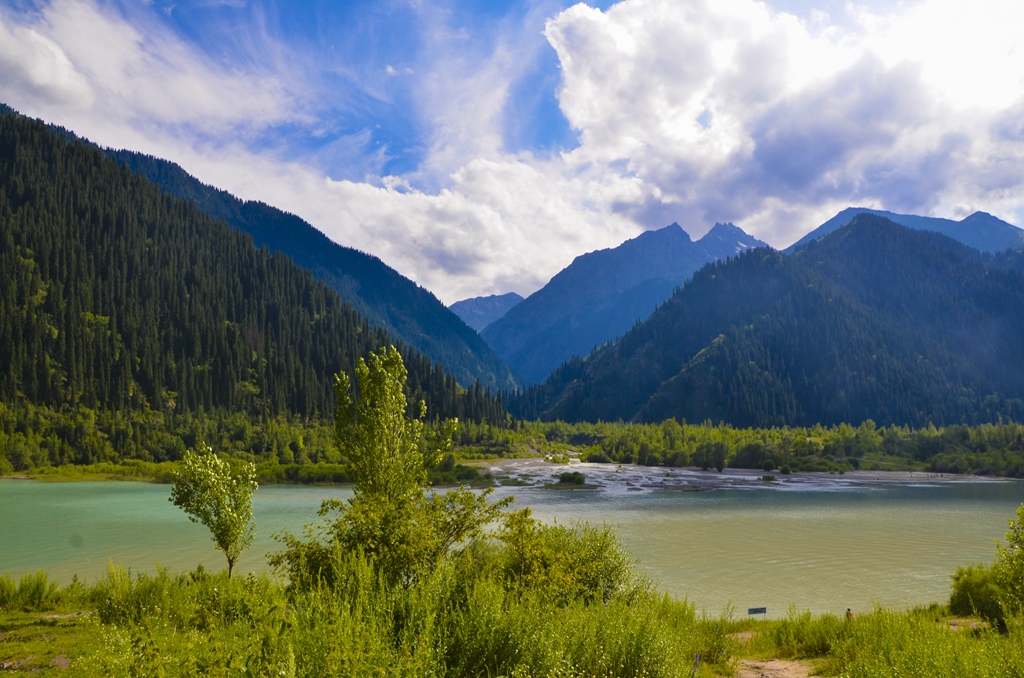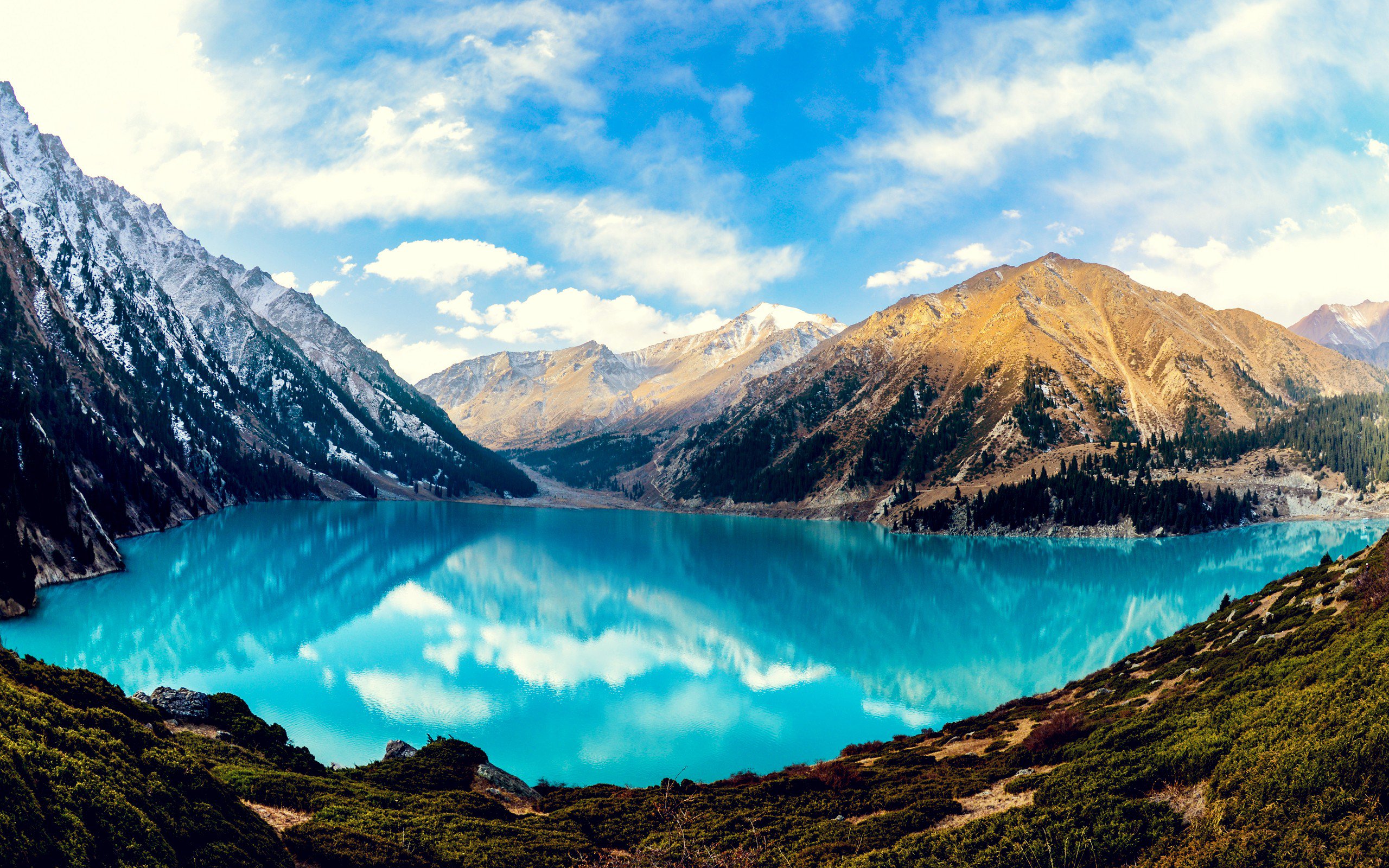Tamgaly is a petroglyph site in the Zhetysu of Kazakhstan. Tamgaly became a UNESCO World Heritage Site in 2004. Tamgaly is located 170 km (by road) northwest of Almaty.
The majority of the 5000 petroglyphs are in the main canyon, but there are a number in the many side canyons. The petrogylphs are mostly Bronze Age, but in some cases have been overlaid with Medieval or later etchings. There are some petrogylphs from the Iron Age.
The name Tamgaly in Kazakh and other Turkic languages means "painted or marked place".
Tamgaly Tas is a famous monument of ancient rock carvings – petroglyphs. They are likely to be carved more than two thousand years ago, approximately in XVI-XIV centuries BC. Among the depicted images there are mysterious Gods and Buddhistic inscriptions, widely known among experts of Indian culture. Archaeologists suggest that there used to be a sacred Buddhist temple, used for prayer and meditation by local people. In addition, Tamgaly Tas has preserved ancient Turkic runic inscriptions of VIII-IX centuries, which might be left by Kipchaks.
Tamgaly Tas is located on the Ile river 170 km north-west of Almaty, ex-capital and largest city of Kazakhstan. The Tamgaly Tas, translated as “written rocks, stones with signs”, is famous because of medieval (XIV-XVI centuries) drawings of Buddha on the rocks. The place is open area collection of the Buddhist petroglyphs. It is amazing to see Buddhist petroglyphs on the territory of non-Buddhist country as Kazakhstan. I am used to see Buddha images only in my trips to Thailand and other countries of that region. Scientists explain presence of these relics because of the migratory processes during the Great Silk Route.









